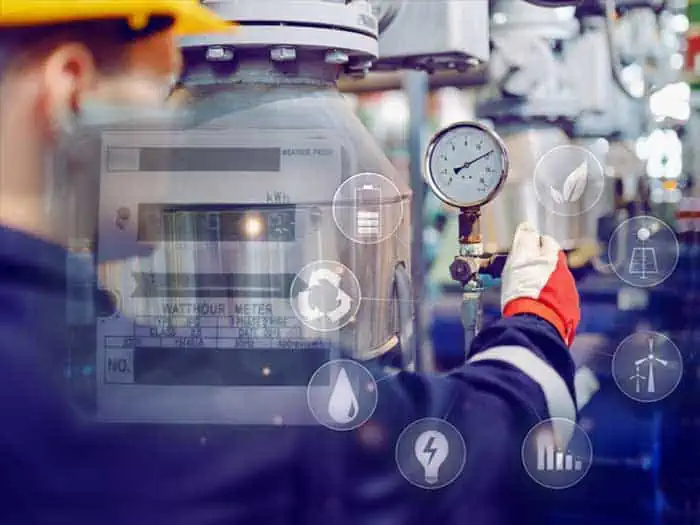


Energy Savings Add Up – Improving Industrial Carbon Footprint
Businesses know they can significantly improve their bottom line by reducing operating costs. One way to reduce costs and carbon footprint is through energy efficiency upgrades – particularly in an industrial environment. Energy cost savings directly impact the bottom line and can increase profit margins. For example, 5% to 15% annual energy cost reductions can be realized by conducting a retro-commissioning project to optimize your facility’s mechanical systems. The up-front cost of the retro-commissioning project is normally within a 1 to 2-year simple payback. So, to realize these financial benefits, here are some general tips demonstrating the benefits of implementing energy cost-saving projects.
Let’s start with a simple example. Say a company has a net profit of 5% and would like to increase its net profit. There are generally two ways to do this; either increase revenue or decrease costs. If your business were to look at reducing costs by implementing an energy project that would save them $1,000 annually, that would be equivalent to otherwise earning an additional $20,000 in revenue ($1000/0.05 = $20,000). An energy efficiency project of this type has the same impact on profits as increasing sales 20:1.
If the energy project has a return greater than the borrowing rate, then you can finance the project, and you may improve cash flow with relatively little risk. Let’s say a business finances an energy project with a $100,000 loan for 15 years at an interest rate of 10%. Your business has no up-front cost, but pays ~$13,100 each year for 15 years. The energy project you were considering was calculated to generate ~$14,900 each year in annual energy cost savings. Since the energy cost savings exceed the financed payments, the project exhibits a net-positive cash flow of $1,800 annually with no upfront costs.
Simple payback is an important financial consideration under many circumstances in conjunction with the Internal Rate of Return (IRR). If an energy project has an IRR greater than your business’s profit margin, energy cost-savings projects are where you should invest money. For example, suppose a business has determined they will consider energy projects with a 2% return above their net profit of 4.0% (i.e., anything >6.0%). In that case, an energy project with a lifespan of 20 years and an IRR of 6.5% fits their financial goals. In this scenario, the project’s simple payback is irrelevant to the goal of returning an established minimum IRR. Had the company insisted on a 2- to 3-year simple payback, an opportunity that could have far exceeded their financial expectations, would have been overlooked.
Consider looking at energy costs differently than currently viewing them. Energy savings realized from a potential energy project are conversely an existing waste stream (a penalty). By doing nothing, the excess energy consumption continues to drain your operating cash every month, not to mention the impact on your carbon footprint. Reducing energy costs and eliminating energy waste can add to a business’s operations’ efficiencies and impress shareholders looking for a lower carbon footprint.

How can you realize energy and cost savings benefits without knowing where to turn next? The first step under the umbrella of energy management is to perform a formal study to identify energy savings opportunities accomplished through an Energy Assessment. The Energy Assessment looks at how energy is consumed at your facility and, through the formal process, will provide you with the fundamental knowledge you need to make a case for implementing energy cost-saving projects. From there, you can work with the decision-makers to prioritize energy savings in your business. Below are a few ideas that may make sense for your business and lower your carbon footprint:
Building system performance can decline, and energy consumption can increase over time, even when performing routine maintenance on equipment. However, you can increase productivity, improve work environments, and reduce maintenance costs while saving money by conducting an energy assessment and investing in your business’s discovered energy savings opportunities.
About the authors:
Sam Cooke, PE, CEM, is a Vice President and Project Director at SCS Engineers. He has over 40 years of engineering experience specializing in manufacturing energy management assessments and implementation projects. Sam was the technical lead for projects involving the performance of energy assessments at over 100 manufacturing companies, including compressed air audits, compressed air leak surveys, process heating assessments, manufacturing HVAC assessments, lighting assessments/replacement, refrigeration efficiency assessments, etc.

SCS Engineers specializes in industrial energy assessments and water conservation evaluations. For more information, please get in touch with Sam Cooke PE, CEM, Tony Kriel PE, LEED AP, or
Additional Resources: